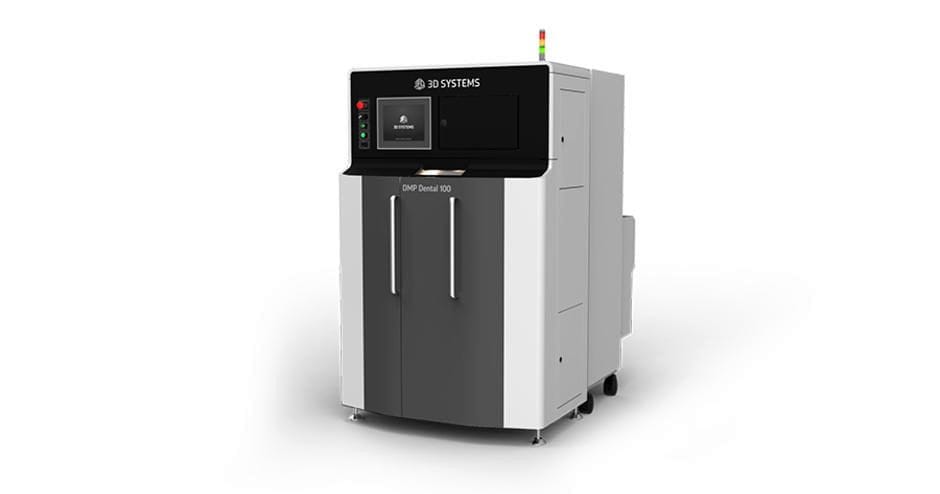
3D Systems announced a pair of similar entry level 3D metal printers.
The company has been marketing 3D metal printers since their acquisition of Phenix Systems in 2013. However, the Phenix-style machines were vastly larger than the new machines just announced, as 3D Systems has been refining their approach to 3D metal printing ever since.
The first of the two new systems is the DMP Flex 100, which is now the smallest member of their DMP family of 3D metal printers. It offers a rather small build volume of only 100 x 100 x 80mm, similar to the size used by jewelry-focused 3D printers.
However, this machine is different in that it 3D prints in metal powder using its 100W laser system. 3D Systems has arranged to support a portfolio of certified metal powders with this machine, including various grades of titanium, with more on the way.
The key feature of the DMP Flex 100, aside from its small size and relatively low acquisition cost, is the quality of the prints. 3D Systems says the surfaces are within 0.005mm spherical radius, and that will certainly create very smooth surfaces.
3D Systems says their proprietary powder deposition process is able to enable prints of up to 20 degrees of overhang without the need for support material. This is significant as it decreases the need for materials, which would otherwise be required to make up the extra support material. It also significantly reduces the amount of post processing required to remove the supports, which is challenging with metal 3D prints.
They say their powder deposition process involves a “layer compacting technology”, which is likely where the accuracy comes from: particles are closer together when fused. 3D Systems says the machine can produce walls as thin as 0.050mm, which is impressive for a 3D metal printer.
But there’s another 3D printer announced by the company, the DMP Dental 100. From the looks of things, this machine is in fact a slightly modified version of the DMP Flex 100 for the dental industry. Images show the machines to be visually identical but with a different nameplate.
That’s not to say there’s anything wrong – because the major difference in these machines is likely the software that drives them. 3D Systems has a comprehensive operational system called 3DXpert that coordinates the entire 3D printing process, from introduction of the 3D model, to job setup, to slicing, to material selection, to print control.
I suspect that that 3DXpert configurations for these two machines is where the major differences take place: they are designed for different users, with different materials.
It goes without saying that the dental machine is set up to use a variety of dental-certified materials. I should point out that is a major reason for 3D Systems’ success in the dental market: dental operations will not acquire equipment unless it can produce certified prints. This is a significant advantage for 3D Systems over several competitors that may have a machine, but not necessarily the right and certified materials.
3D Systems says both machines are available for purchase now.
Via 3D Systems

